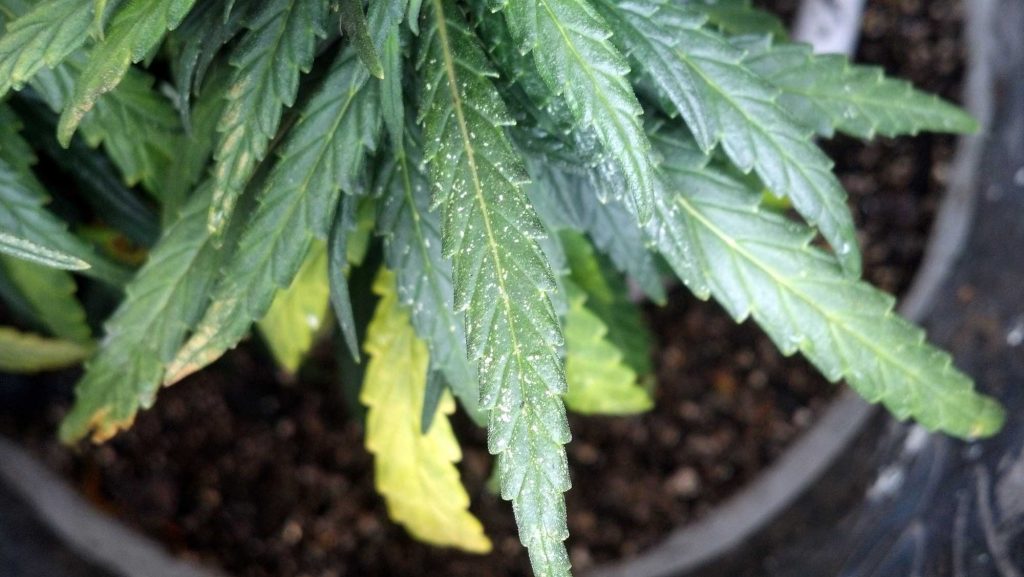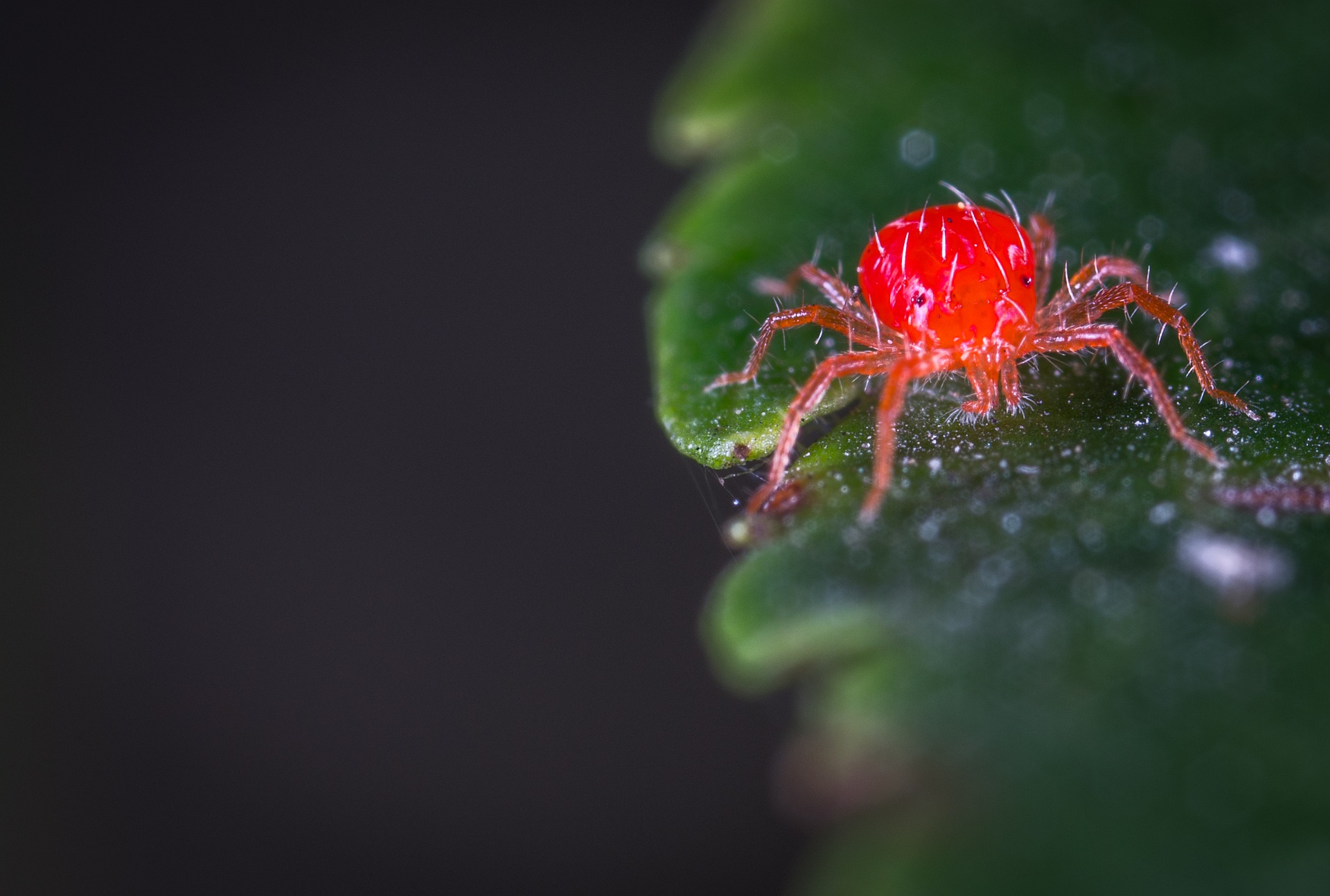What are Spider Mites?
Every grower’s concern.
One of the more common house plant (Winter) as well as outdoor garden plant (Summer) pests that are most actively found in the warmer seasons as they overwinter for the rest of the colder seasons throughout the year. Part of the Tetranychidae family, Spider Mites are not insects, they’re actually tiny arachnids related to Spiders and Ticks, these tiny organisms inhabit and siphon plant sap (Chlorophyll) with the use of a sharp stylet mouthpiece. They attack and feed off the plants leaves and may also lay dormant in soils until optimal conditions arise for them to proliferate successfully.
Fully grown male mites are 0.4-0.5 mm in length making them almost invisible to the naked eye. Female mites appear to be slightly larger and more oval shaped, the female is also the most dominant of the genders. Comprised of a hairy abdomen and four hairy legs, these mites actively feed and reproduce in large colonies. Most actively in the warmer seasons of the year these mites may feed off a large variety of hosts from weeds to food crops and can be quite a tough pest to deal with once their trade mark silky webs begin to appear (Dr. Alton “Stormy” Sparks, Jr. and Dr. David G. Riley – University of Georgia).
Mites generally tend to nourish themselves by feeding and reproducing below the surface of mature leaves, but as population numbers increase these mites will readily begin to feed and reproduce on the upper surfaces of leaves. Spider mites undergo five life stages – egg, larva, two nymph stages and the adult stage. The life cycle of these mites are completed in a period of about 8-12 days at the correct temperatures (28-30 degrees Celsius). They may also go through a survival process called “Overwintering” where the bugs lay dormant and inhabit ‘weed host plants’ until conditions are favourable. Females lay eggs singularly in the colder seasons and deposit about 5-6 eggs per day, these eggs then hatch in a period of about 3-6 days dependent on the temperatures they are exposed to and they may lay dormant in fallen leaves or under bark (Overwintering). The larvae and nymphs develop and mature completely in 4-9 days (Temperature dependent) and the females have an ovi-position period of about 1-2 days. The general life expectancy of an adult is about 30 days (Dr. Alton “Stormy” Sparks, Jr. and Dr. David G. Riley – University of Georgia).
Controlling Mites
Detection
A good control method starts with a good spotting or detection method. Looking at the plant, there are three tell-tale signs:
- Yellow or white spots begin to appear on the leaves.
- Tiny white and red moving dots on the leaf surface. (below or above)
- White fine webbing appear on the leaves. (Signs of an established colony)
If mites are spotted and plants are believed to be under attack, immediately isolate the plant from all other possible host and begin taking steps to controlling the problem while also preventatively controlling your plants that don’t show signs of their presence. Just to be extra safe (Heather Rhoades, 2018).

Control
There are many forms of control, biological, natural, physical as well as chemical. At Plant Matter we demote the use of harmful chemicals and rather promote the use of eco-friendly control methods.
Method 1: Sanitation
Ensure your grow space is sanitised as well as your growing equipment. (pots and tools etc.) Wash or hose them down with cleaning agents such as ‘captab’ or natural sterilisers (lemon and garlic water).
Select organic pasteurised (sterilised at 80 degrees Celsius not 100 degrees Celsius) soil and inspect plants for pests even before planting regardless of the source of the plant.
Method 2: Physical Control
Isolate the host plant. Place the plant far away from your desired crops.
Spray the plants stems and leaves with pressurized water from either a hose, hand sprayer or faucet but take extra care not to damage the plant. Do not use too much pressure.
Spray down as much of the plant as possible.
Repeat steps several times over a 2-3 week period to obtain successful results.
Method 3: Biological/Natural Control
Isolate the host plant.
Introduce predator insects to the host plant. Insects such as ladybugs, praying mantises and predatory spider mites naturally feed off mites. These insects may either be caught in your garden depending on the season or they may be purchased at reputable companies in and around CPT.
Ensure that your purchased insects are the correct insects for the particular pest, plant and season that you will be using them in.
Another method in this category would to the method of companion planting.
Introducing species like nasturtium (Tropaeolum majus) or marigold (Tagetes sp.) will help to deter these pests as the scent of the leaves and flowers of these species are too intense for mites to handle.
Method 4: DIY
You’ll need 3 cloves of garlic, 2 cayenne chilies (or cayenne chilli powder) and a 2 litres of water.
Chop garlic and chilies, not too fine.
Allow chopped bits to brew for two hours in boiling water. Throw 500ml boiling water with the content into a jar and let it cool, later add another 500 ml boiling water, and so on until you have 2 litres.
Once contents have cooled, add two to three drops of liquid dish soap into a spray bottle with 500 ml of your solution and spray at night or when the plants aren’t exposed to direct sunlight.
Do not allow the mixture to stand for more than two to three nights, the potency will wither away and render the control useless.
Method 5: Insecticidal Oils
Using organic insecticides such as Neem oil or the vastly supplied Margaret Roberts rose mite insecticide at cool parts of the day does the trick.
The thick viscosity of the oil clings and sticks to the bugs and kills them rather effectively.
Ensure to not spray just one time, this method needs to be repeated several times according to the directions on the product you may be using.
Let this method be your last resort.
A GROWER’S TIP
The key to a garden free of stresses and problems is to successfully integrate control methods, using each method in stages instead of repeatedly using one method. Having an effective IPM (Integrated Pest Management) is what separates the mountains from the mole hills.
Leave your comments down below and tell us what works for you.
Plant Matter, Simplifying growth.

Ashraf Sirkhoth,
Your friendly Permaculture Horticulturist.
Sources:
https://www.gardeningknowhow.com/plant-problems/pests/insects/spider-mite-control.htm
https://wiki.bugwood.org/Spider_mites
https://www.arbico-organics.com/category/spider-mite-control
https://www.joyusgarden.com/plant-pests-spider-mites-whiteflies/
https://www.bioadvanced.com/articles/controlling-spider-mites
https://www.growweedeasy.com/cannabis-plant-problems/how-to-get-rid-of-spider-mites


This article is amazing and very educational, Insightful to say the least. I learnt alot and can carry on that knowledge. Thank you
Well written Ash. Exceptional article and very informative. Really impressive.
Informative article!
A beautifully written article.Very informative and quite the read.
Im so proud of you Mr Sirkhoth, its an amazing article.
Awesome article my son. Myself and your dad is very proud of you and your achievements! Well done!
Awesome article my son. Myself and your dad is very proud of you and your achievements! Well done! P.S. A VERY HAPPY BIRTHDAY MY BOY!
Hey,
First off great product you have!
Very keen on knowing the pricing for the 1000l double barrel with the high poles. It will have to include delivery to Pretoria.
Have a great one ladies and gents.
Kind regards,
Matthew
Thanks for one’s marvelous posting! I certainly enjoyed
reading it, you could be a great author.I will make certain to bookmark your blog and will eventually come back at some point.
I want to encourage you to continue your great posts,
have a nice evening!
Nice comprehensive blog, thank you
I am actually delighted to read this weblog posts which carries lots of helpful information, thanks for providing these data.
I’m not that much of a online reader to be honest
but your blogs really nice, keep it up! I’ll go ahead and bookmark your site to come back later on. All the best
Fantastic site. Plenty of helpful information here. I’m sending it to several pals ans additionally sharing in delicious.
And of course, thank you on your effort!
Pretty! This has been an incredibly wonderful post. Many
thanks for supplying this information.
Im pretty pleased to discover this page. I wanted to thank you for ones time for this particularly wonderful read!! I definitely liked every little bit of it and I have you bookmarked to look at new stuff on your blog.
Greetings! Very useful advice in this particular article! Its the little changes that will make the largest changes. Thanks a lot for sharing!
I have been exploring for a bit for any high-quality articles or weblog posts on this kind of area . Exploring in Yahoo I ultimately stumbled upon this site. Studying this information So i am satisfied to convey that I’ve an incredibly good uncanny feeling I came upon exactly what I needed. I most indisputably will make certain to don¦t forget this site and give it a look regularly.
Your articles are extremely helpful to me. May I ask for more information?